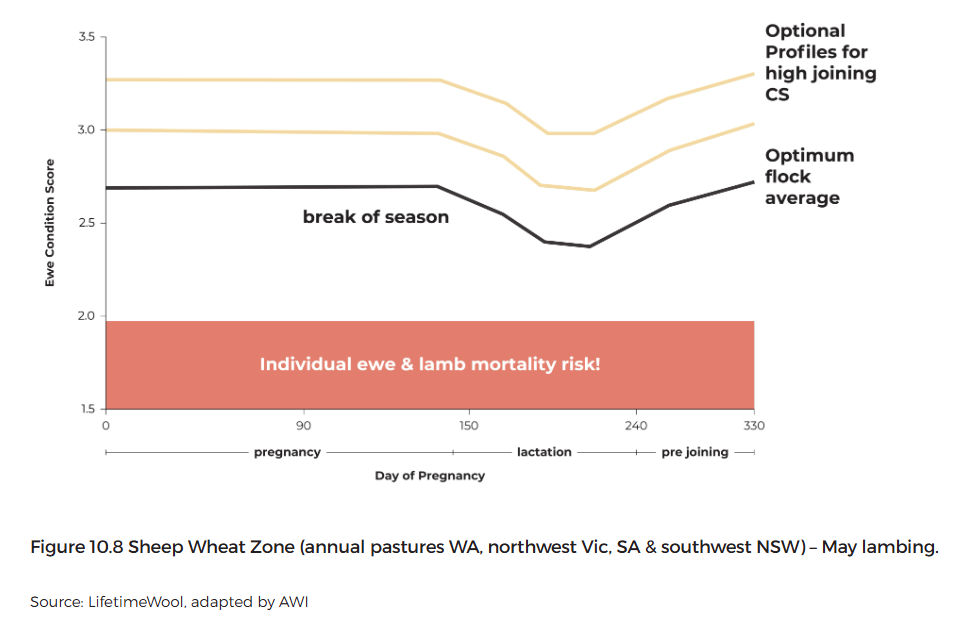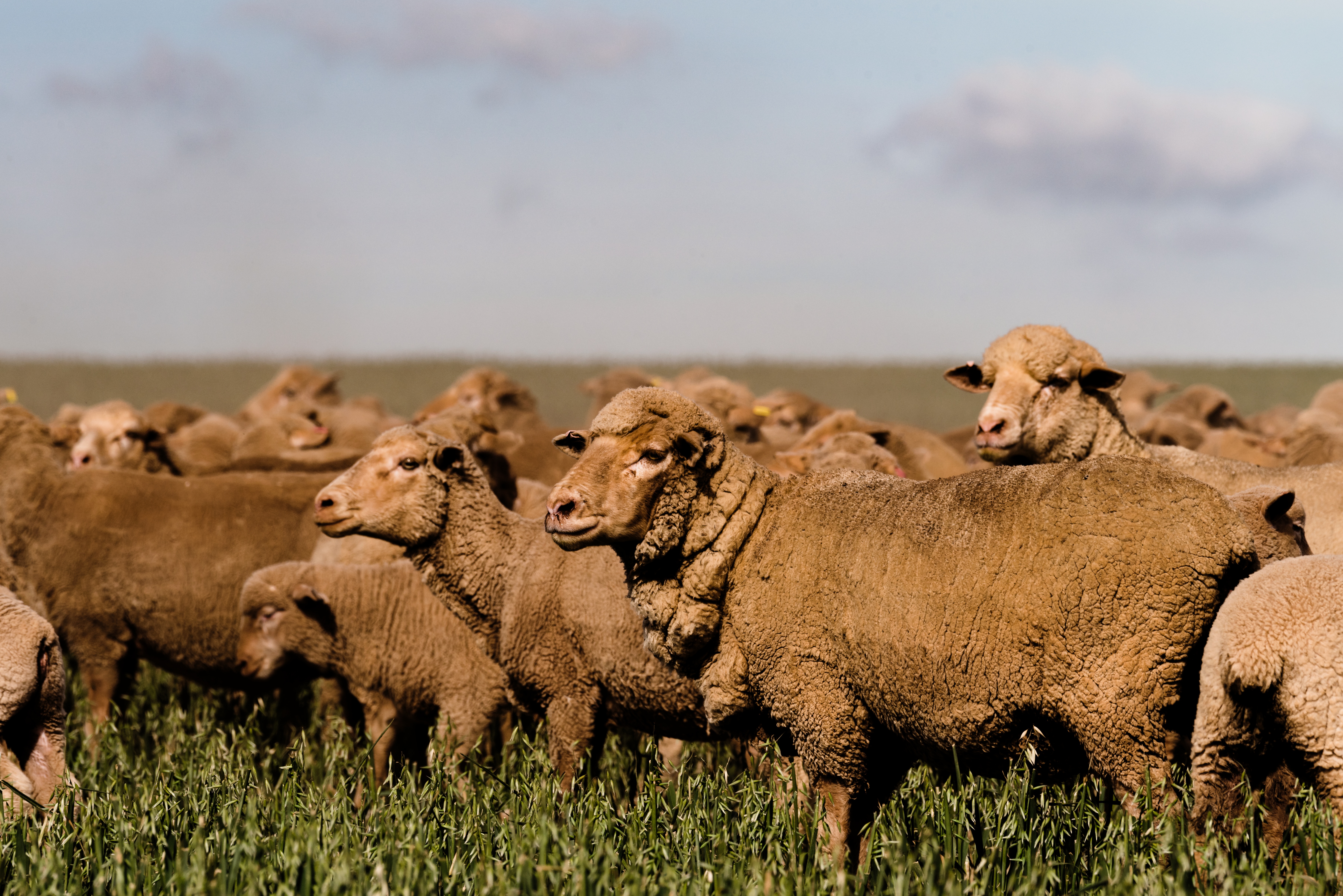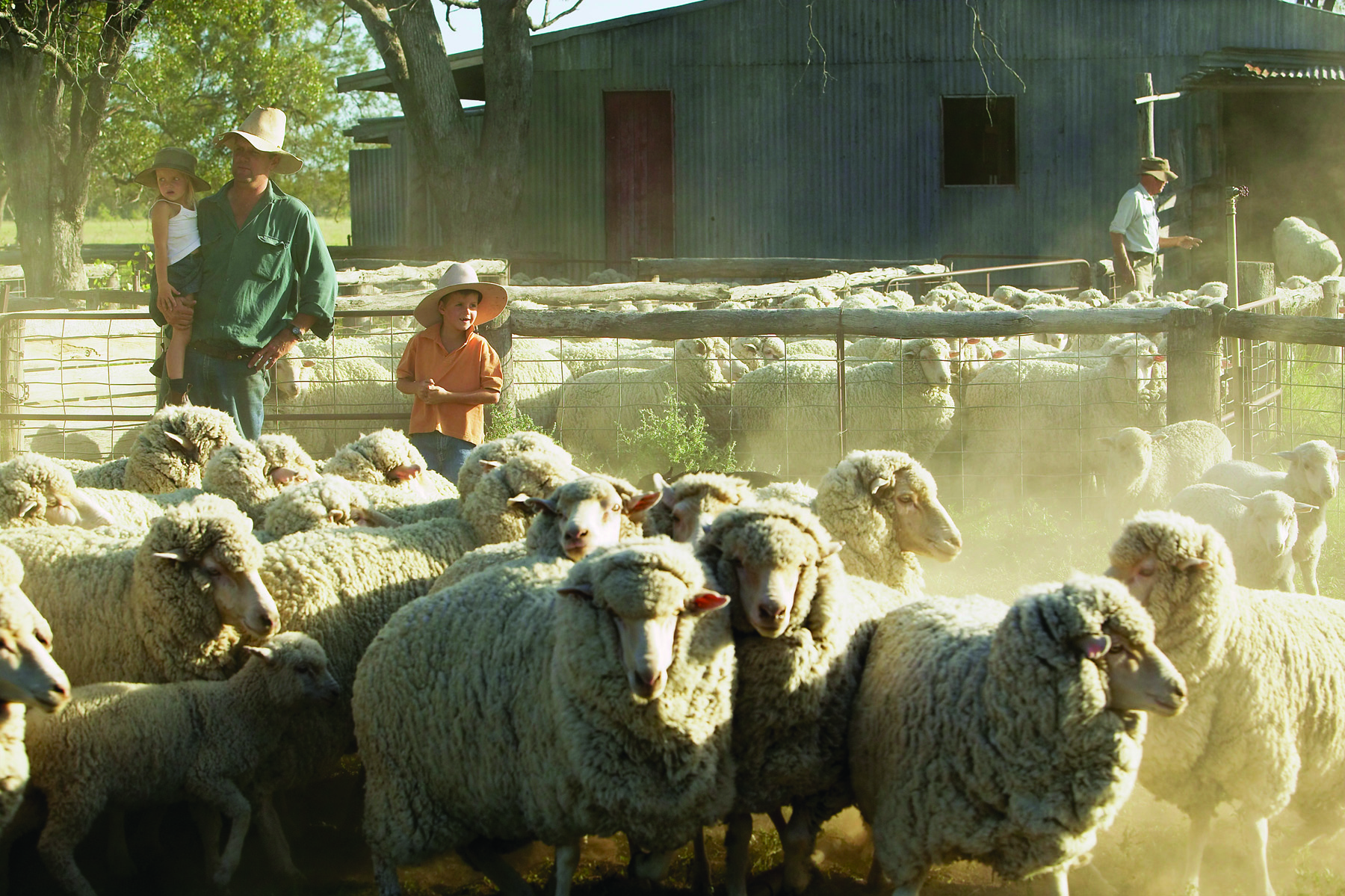Management targets for increased productivity and profitability
.png/Zz0yM2JiZjM5ODBlYmMxMWYwOTU5YTYyNTc0YTA0ZjBjZQ==)
Ewe nutrition during pregnancy and lactation plays a major role in the productivity and survival of the ewe and her lambs. Here we have summarised the management targets for optimum productivity and profitability along with what to do and what to avoid when managing ewes to optimise lamb survival.
Management targets during pregnancy and lactation
Guidelines for condition score and feed-on-offer are derived from the Lifetime Wool project. The three zones modelled are summarised in the table below.
|
Zone |
Rainfall |
Pasture type |
Optimum time of lambing |
|
Cereal-sheep |
280-420mm |
Stubbles and annual pastures |
Late July |
|
Medium rainfall |
450-600mm |
Sub clover and annual grasses |
Late July to August |
|
High rainfall |
>600mm |
Perennial and annual species |
Late winter/spring |
The targets presented are for the optimum time of lambing, which is the time of year that provides the best match of pasture availability to the energy needs of the ewe and lamb. The exception is the cereal-sheep zone, where the guidelines presented are for a May lambing, as this is when many growers lamb for several reasons.
Management targets
|
|
|
|
Singles |
Twins |
|
Condition score (CS)
|
Cereal-sheep zone (May lambing)
|
• CS 2.7+ from early pregnancy to lambing. Maintain CS during pregnancy. •CS 2.7 at lambing •CS 2.7 – 3 during lactation |
• CS 2.7+ from early pregnancy to lambing. Maintain CS during pregnancy. •CS 2.7+ at lambing •CS 2.7 – 3 during lactation |
|
|
Medium rainfall zone (late July- August lambing)
|
• CS 3 in early to mid-pregnancy •CS 3 by lambing •CS 2.7 – 3 during lactation |
• CS 3 in early to mid-pregnancy •CS 3+ by lambing •CS 2.7 – 3 during lactation |
||
|
High rainfall zone (late winter/spring lambing)
|
• CS 3 in early to mid-pregnancy •CS 3 at lambing •CS 2.7 – 3 during lactation |
• CS 3 in early to mid-pregnancy •CS 3+ at lambing •CS 2.7 – 3 during lactation |
||
|
Feed-on-offer (FOO) from green feed
|
Cereal-sheep zone (May lambing)
|
Lambing |
800 kg DM/ha at lambing, if green feed is available |
|
|
Lactation |
2000 kg DM/ha |
2500 kg DM/ha |
||
|
Medium rainfall zone (late July- August lambing)
|
Early to mid-pregnancy (Day 1 – 90) |
≥700 kg DM/ha at the break of season 700-900 kg DM/ha by Day 90 |
|
|
|
Late pregnancy (Day 90 – 150) |
Increasing from 800 kg DM/ha at Day 90 to ≥1500 kg DM/ha by lambing |
|
||
|
Lambing |
1500 kg DM/ha |
1800 kg DM/ha |
||
|
Lactation |
2000 kg DM/ha |
2500 kg DM/ha |
||
|
High rainfall zone (late winter/spring lambing)
|
Early to mid-pregnancy (Day 1 – 90) |
≥500 kg DM/ha at the break of season 900 kg DM/ha by Day 90 |
|
|
|
Late pregnancy (Day 90 – 150) |
≥1000 kg DM/ha |
≥1200 kg DM/ha |
||
|
Lambing and lactation |
1200kg DM/ha |
1800kg DM/ha |
||
|
Pasture quality
|
Prioritise lambing paddocks with better quality feed for twin-bearing ewes, i.e., more legume |
|||
|
Shelter in lambing paddocks
|
Prioritise lambing paddocks with better shelter for twin-bearing ewes. Paddocks that provide protection from the prevailing winds and that have shelter throughout the paddock are best for lambing. |
|||
|
Mob size at lambing
|
Smaller mob sizes increase lamb survival, with the effect greater for twin-born lambs compared to single-born lambs. Prioritise smaller mobs for twin-bearing ewes. Temporary electric fencing can provide a cost-effective method of reducing mob size while maintaining, or even increasing, stocking rate in your best lambing paddocks. |
|||
You can find further information about CS and FOO targets in the LifetimeWool Ewe Management Handbooks here:
Managing ewes to improve lamb survival
What to do:
- Differentially manage single- and twin-bearing ewes to optimise ewe nutrition and the allocation of resources, including feed-on-offer and shelter
- Test supplementary feeds to allow accurate feed budgeting
- Condition score ewes at key stages of the reproductive cycle and manage nutrition accordingly
- Administer annual booster vaccinations 4 to 6 weeks before lambing
- Give pre-lambing drenches at the same time as other pre-lambing husbandry procedures, where drenching is necessary based on a worm egg count
- Implement control programs for foxes and other pests well before lambing
- Graze ewes on paddocks with a low worm risk
- Record lamb survival for individual paddocks each year to allow the paddocks with the best performance to be identified and prioritised for the highest risk mobs (multiple-bearing ewes and those in poorer condition)
- Wet/dry ewes at lamb marking to identify dry ewes that have failed to rear a lamb
- Investigate any abnormal levels of ewe or lamb mortality with your veterinarian or animal health advisor
What to avoid:
- Shearing, crutching or other routine procedures within 4 to 6 weeks from the start of lambing, due to the time off feed, increased risk of metabolic disorders, stress to the ewe and increased energy requirements of shorn ewes
- Disturbances to ewes during lambing, which can reduce the time spent at the birth site and result in a weak ewe-lamb bond (e.g. people, dogs, machinery)

You can find more information about the factors that impact lamb survival and management strategies to optimise lamb survival in our article here: Raising the bar with lamb survival
Useful resources:
- Making More From Sheep
- ‘Feed budgeting 101’ article
Amy Lockwood, AWI Extension WA








.jpg/Zz0zNDRlNmZlMjBlYmMxMWYwOTk5YzVlMmQ3Njg2YmYwZg==)
